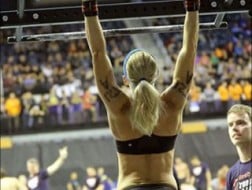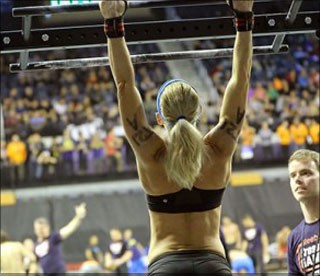Pain versus discomfort. Learn the difference.

[caption id="attachment_236" align="aligncenter" width="615"] You are fine!!! Just work through it![/caption]
You are fine!!! Just work through it![/caption]
In training there is a big difference between (bad) pain and discomfort. And more people could benefit from understanding what the differences are. I’ve had clients tell me that pull-ups hurt (no shit!) so they can’t do them, or that they need to lower the weight on their squats because their quads are in pain. In these situations, the kind of discomfort they are referring to is good and necessary for making further progress. But a lot of people, especially newbies to exercise, don’t yet know the difference.
You aren’t going to get the body you want without putting your current body under a little bit of discomfort. Nor are you going to get stronger unless you actually struggle a bit to lift heavier weights. Realise that you need to be able tolerate the discomforts that come with increased efforts in training if you want to go further with your goals. It is inevitable if you want to improve. Working though physical challenges and discomfort can also build great confidence and mental toughness.
 On the other hand, the wrong kind of pain is bad. If you can learn to be more aware of the wrong sensations that are painful and not meant to be a part of your training and what types of pain are actual warning indicators to either ease off what you are doing, or slam on the brakes temporarily, you can prevent injuries from setting in. So don't put your ego before your safety and decide to work through the pain of a serious injury. You might think it makes you hardcore, but in reality it just makes you injured and you will end up having to take even more time off training.
On the other hand, the wrong kind of pain is bad. If you can learn to be more aware of the wrong sensations that are painful and not meant to be a part of your training and what types of pain are actual warning indicators to either ease off what you are doing, or slam on the brakes temporarily, you can prevent injuries from setting in. So don't put your ego before your safety and decide to work through the pain of a serious injury. You might think it makes you hardcore, but in reality it just makes you injured and you will end up having to take even more time off training.
The AASP defines the different types of pain as following:
- Fatigue and discomfort. This is an unpleasant feeling produced by effort, but not strong enough to be labeled “pain.” Athletes learn to be “comfortable being uncomfortable,” as such efforts are a regular and necessary part of most sports. With continued effort, discomfort can turn into …
- Positive training pain. This pain often occurs with endurance exercise, and includes muscle fatigue and sensations in the lungs and heart that can range from unpleasant to what is typically thought of as pain. It is neither threatening nor a sign of injury. Because athletes know the cause, are in control of their effort, and recognize that these feelings are beneficial and can enhance performance. In short, positive training pain is a good sign of effort and improvement.
- Negative training pain is still not indicative of an injury, but goes beyond positive signs of training benefit. An example may be extreme soreness that lasts for days. There may be an overtraining risk.
- Negative warning pain is similar to negative training pain, with the added element of threat. It may be a new experience of pain and a sign of injury occurring. It typically occurs gradually, and allows the athlete to evaluate potential training causes and respond appropriately.
- Negative acute pain is an intense and specific pain that occurs suddenly, often a result of injury. It is often localized to a specific body part and is labeled as threatening.
- Numbness is rare but of very serious concern. It is when the athlete feels nothing when soreness, fatigue or pain should be felt. Instead, limbs are numb. This may be a sign of serious injury or pushing one’s body past its physical limits.
Then they go on to say:
"Accepting the reality that pain is a part of training and competition may be most helpful. You cannot perform at a high level and not experience pain. Comfort and performance excellence are mutually exclusive. You cannot have them both. Prior to exercise, decide how much pain you are willing to experience to achieve your goals. When pain shows up, be willing to feel it fully as part of your experience. Let your pain be in service of your greater goal. You may be surprised to find your pain suffering will be lessened when you allow pain to be a part of sport."
You can read more here: AASP Pain tolerance in sport.
Just remember to be honest with yourself and ask yourself: is squatting 5 reps @ 90% of your 1RM painful, or just highly uncomfortable and difficult to perform? Are high intensity prowler sprints painful, or just extremely uncomfortable and taxing on the lactate system?
The key difference here is pain versus discomfort.
Pain = Don't do it
Discomfort = Have a cup of cement and harden the f*#$ up. :)
Join the other 10,000+ who get my best fitness, diet & mindset tips.




Comments